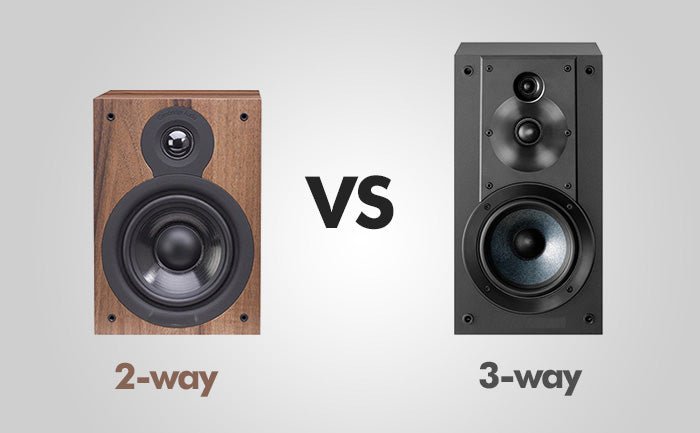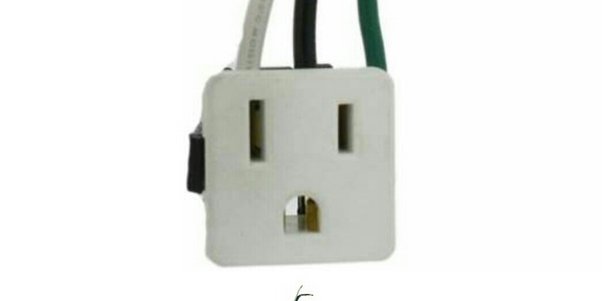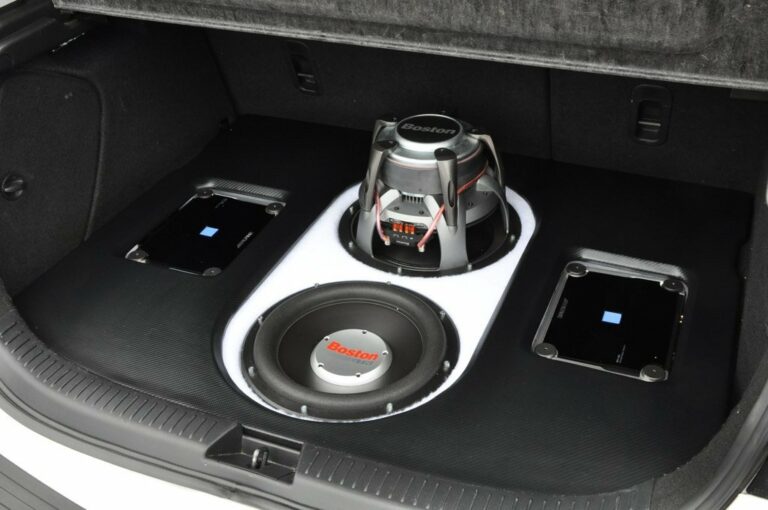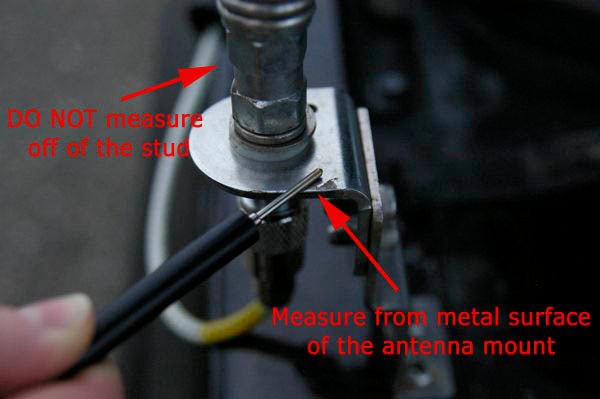Understanding The Distinction: 2-Way Vs. 3-Way Speakers
Are you curious about the difference between 2-way and 3-way speakers? Well, I’ve got the answer for you right here! When it comes to audio systems, the number of ways in a speaker refers to the number of drivers it has. In simplistic terms, a 2-way speaker consists of a woofer for low-frequency sound reproduction and a tweeter for high-frequency sound reproduction.
On the other hand, a 3-way speaker adds a mid-range driver to the mix, creating a more comprehensive audio experience. Now that we’ve touched on the essence of what’s the difference between 2-way and 3-way speakers, let’s dive deeper into each type and explore their unique characteristics.
What’s the Difference Between 2-Way and 3-Way Speakers?
When it comes to choosing speakers for your audio system, you may have come across terms like 2-way and 3-way speakers. But what exactly do these terms mean, and how do they impact the performance of your audio setup? In this article, we will delve into the differences between 2-way and 3-way speakers, explore their components and functions, and help you make an informed decision based on your specific audio needs and preferences.
Understanding Speaker Architecture
Before we dive into the specifics of 2-way and 3-way speakers, let’s first understand the basic architecture of a speaker. Every speaker consists of three main components: a tweeter, a midrange driver, and a woofer. Each of these components is responsible for producing a specific range of frequencies.
– The tweeter is responsible for producing high-frequency sounds, such as cymbals, violin strings, and vocal sibilance.
– The midrange driver handles the midrange frequencies, including vocals, guitars, and most of the musical instruments.
– The woofer focuses on low-frequency sounds, such as bass lines, drums, and deep tones.
Now that we have a basic understanding of speaker architecture, let’s explore the differences between 2-way and 3-way speakers.
The Anatomy of a 2-Way Speaker
As the name suggests, a 2-way speaker consists of two components: a tweeter and a woofer. These two components work together to cover a wide spectrum of frequencies.
The tweeter handles the high frequencies, while the woofer takes care of the midrange and low frequencies. The crossover network, a vital component in a 2-way speaker, divides the audio signal into appropriate frequency bands and directs them to the respective drivers. This ensures that each driver reproduces the frequencies it is intended to handle, resulting in a balanced and accurate sound reproduction.
The advantages of 2-way speakers include:
– Compact design: 2-way speakers tend to be smaller and more compact compared to their 3-way counterparts. This makes them ideal for installations with limited space.
– Cost-effective: Since 2-way speakers have fewer components, they are generally less expensive compared to 3-way speakers.
– Accurate sound imaging: The integration of high and low-frequency drivers in a 2-way speaker allows for precise sound imaging and localization.
The Complexity of a 3-Way Speaker
Unlike 2-way speakers, 3-way speakers incorporate an additional component: a midrange driver. This addition enables the speaker to handle a broader range of frequencies, resulting in more detailed and accurate sound reproduction.
The tweeter reproduces the high frequencies, the midrange driver handles the midrange frequencies, and the woofer takes care of the low frequencies. Each driver is dedicated to a specific frequency band, thanks to the crossover network, which distributes the audio signal accordingly.
The benefits of 3-way speakers include:
– Enhanced sound clarity: By dividing the audio signal into three frequency bands, 3-way speakers can reproduce a wider range of frequencies more accurately, resulting in improved sound clarity and realism.
– Reduced distortion: The distribution of frequencies among multiple drivers reduces the strain on each individual driver, minimizing distortion and ensuring a cleaner audio output.
– Improved dynamic range: With dedicated drivers for each frequency range, 3-way speakers can handle a wider dynamic range, allowing for greater musical nuance and subtlety.
Choosing Between 2-Way and 3-Way Speakers
Now that we have explored the differences between 2-way and 3-way speakers, you might wonder which option is best for your audio setup. The decision ultimately depends on your specific needs, budget, and audio preferences.
Consider the following factors when making your decision:
1. Frequency range: Determine the range of frequencies you want your speakers to reproduce accurately. If you primarily listen to music with complex instrumentation or enjoy a wide variety of genres, 3-way speakers might be a better choice due to their extended frequency response.
2. Room size: Take into account the size of the room where the speakers will be installed. If you have limited space or need a more discreet setup, 2-way speakers are often more compact and easier to integrate.
3. Budget: Evaluate your budget and determine how much you are willing to invest in your audio system. 2-way speakers are generally more budget-friendly, making them a suitable option for those looking for cost-effective solutions.
4. Audio preferences: Consider your personal audio preferences and the type of listening experience you desire. If you value accuracy, detail, and a more nuanced soundstage, 3-way speakers may offer a more immersive audio experience.
When it comes to choosing between 2-way and 3-way speakers, it’s essential to understand the differences in their architecture and how they impact sound reproduction. 2-way speakers offer a compact design and cost-effective solution, while 3-way speakers provide enhanced sound clarity and a wider frequency response.
Ultimately, the choice should align with your specific audio needs, budget, and preferences. Whether you opt for 2-way or 3-way speakers, both options can provide a high-quality audio experience that elevates your listening pleasure.
We hope this article has shed light on the differences between 2-way and 3-way speakers and helped you make an informed decision for your audio setup.
2-Way vs 3-Way Speakers: Which Is Better?
Frequently Asked Questions
What is the difference between 2-way and 3-way speakers?
When it comes to speakers, the main difference between 2-way and 3-way systems lies in the number of drivers and frequency ranges they can reproduce.
What is a 2-way speaker?
A 2-way speaker consists of two drivers: a woofer for low frequencies and a tweeter for high frequencies. The woofer handles the lower range of sounds, while the tweeter takes care of the higher frequencies.
What is a 3-way speaker?
A 3-way speaker, on the other hand, has three drivers: a woofer, a mid-range driver, and a tweeter. The woofer handles the low frequencies, the mid-range driver handles the middle frequencies, and the tweeter covers the high frequencies.
What are the benefits of a 2-way speaker?
2-way speakers are generally more affordable and easier to install since they have fewer components. They provide decent sound quality for most applications and are suitable for small to medium-sized spaces.
What are the advantages of a 3-way speaker?
3-way speakers offer a more detailed sound reproduction since the frequencies are divided among three drivers. They have a wider frequency response, resulting in improved clarity, especially in the mid-range frequencies. They are ideal for larger spaces or for those who desire higher audio accuracy.
Which speaker is better for me, 2-way or 3-way?
The choice between a 2-way or 3-way speaker depends on your specific needs and preferences. If you are on a budget or have limited space, a 2-way speaker might be sufficient. However, if you are an audio enthusiast or want the best possible sound reproduction, a 3-way speaker would be a better option.
Can a 3-way speaker be used as a 2-way speaker?
Yes, a 3-way speaker can be used as a 2-way speaker by simply bypassing the mid-range driver. However, it may not deliver optimal performance since the design is optimized for three drivers. It is recommended to use the speaker as intended to enjoy its full potential.
Final Thoughts
The main difference between 2-way and 3-way speakers lies in their design and the number of drivers they use. While 2-way speakers consist of a woofer and a tweeter, 3-way speakers add an additional mid-range driver to enhance the sound reproduction. This extra driver allows for a more accurate and detailed audio experience, especially in the mid-frequency range. Overall, 3-way speakers offer a higher level of clarity and separation of sound compared to 2-way speakers. When choosing between the two, it is essential to consider your specific audio needs and preferences.






